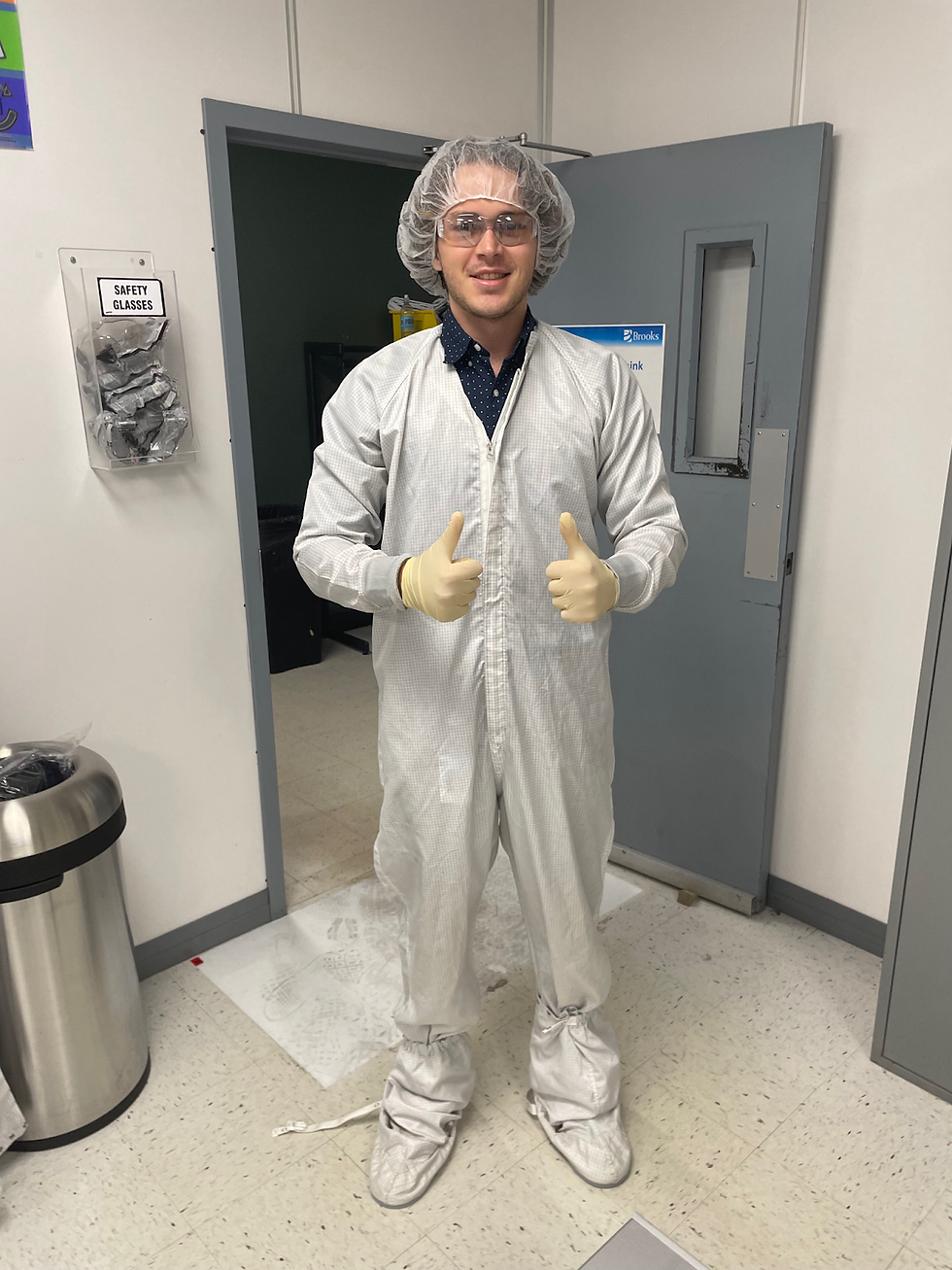Hunter Tuff '23: Brooks Automation
- The Rivers School
- Jul 27, 2022
- 3 min read
This summer, I was fortunate enough to have an in-person internship at Brooks Automation in Chelmsford, Massachusetts. This company has two divisions: Semiconductor Manufacturing, which is Brooks, and Life Sciences, which is named Azenta. I worked in Semiconductor Manufacturing with manufacturing engineers (MFE’s). Within Semiconductor Manufacturing, Brooks makes two types of systems: Atmospheric and Vacuum. Both of these systems get sent to companies who manufacture semiconductors which are used in computer chips inside of computers, cell phones, cars, and many other things we use every day.

A Vacuum System robot that I worked with
One task of mine was to collect system sheets in the clean room. All of the robots are assembled in a completely clean environment to ensure nothing can contaminate these systems. In order to enter these clean rooms you must get dressed in a suit, hair net, gloves, special boots, and goggles. In these clean rooms they begin to assemble the Atmospheric and Vacuum robots.

There are many different problems that can occur when manufacturing a robot: bad wiring, damaged parts, lost parts, non-fitting parts, etc. These issues are logged onto a sheet at the end of each shift. It was my job, along with another intern Thomas, to receive these sheets and log them into a spreadsheet.
Another task of mine was to build something called the “small move test stand”. This system is used to test robots using a camera that will track the rotational movement of an end effector. The end effector has a small puck that has an etched target on it that the camera on the test stand will be trained to locate and save the initial position of the target. This puck will move in a circular pattern of 1 mm, and the camera will calculate and log the repeatability of the arm to reach the same position for multiple runs over the span of a few hours.

My final task in the clean room was to help technicians with some builds. We would be by the technician's side mostly watching how the robot is assembled but also at times helping a little with the build. It was super cool to learn how both the Vacuum and Atmospheric systems are built in these clean rooms. We also got the chance to observe some of the robots being tested in a separate clean room.
Another task of mine was to research lab automation, which is the usage of robots and different systems in order to maximize output of products. I had to look for companies that use or manufacture robots and conveyor belts in order to move different products around the laboratory. It was super interesting to see all the types of technology and different robots that have precise actions in order to make a perfect final product. In addition, it was satisfying to learn how to successfully gather and organize data points into a polished report. This project allowed me to learn more about the growing field of automating labs and understand the process of working to compile relative information.

Thomas, Dana, and I also had a super cool project where we were tasked to design a shipping fixture that would hold the arm of one of the robots to its main system to ensure it doesn't move around. The issue they ran into before is that the previous shipping fixtures cost too much money to continue to purchase. We designed a less expensive piece that we could 3D print. We worked with the engineering team as well to make sure it met all specifications and would work effectively.

I am so grateful to be given such an awesome opportunity and to have gained such valuable experience. Special thanks to Richie Mendes, Dana Miele, and Mr. Schlenker for all of their help this summer!
Comments